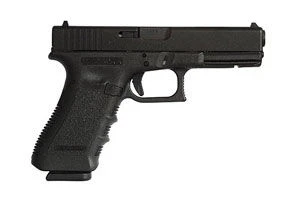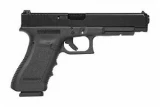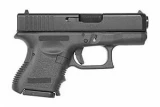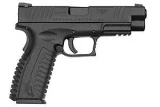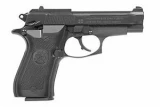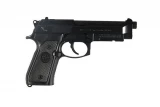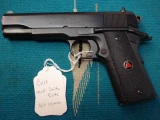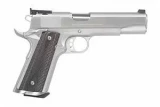Glock 22 Gen 4 vs Nagant 1895
Put handguns head to head to compare caliber and more.
|
$806.15
|
vs |
$0.00
|
| Handguns | Glock 22 Gen 4 | Nagant 1895 |
|---|---|---|
| Summary | ||
| Rating | ||
| Rank | ||
| Action | Safe Action | |
| Caliber | .40 S&W | |
| Capacity | 15+1 | 17+1 |
| Finish | Black | Stainless Steel |
| Sights | Fixed | Front Blade |
| Barrel Length | 4.49" | 4.5" |
| Gun Type | Revolver | |
| Details | ||
| Brand | Glock | |
| Reviews | See 3 Reviews | N/A |
| Prices | ||
| MSRP | $789.15 | $0.00 |
| Used Price | $552.41 | $0.00 |
| Sale Price | $710.24 | $0.00 |
Handguns Descriptions
Glock 22 Gen 4
The GLOCK 22 Gen4, in .40, introduces revolutionary design changes to this model of perfection that the majority of law enforcement across the country put their trust in every day. The Modular Back Strap design of the G22 Gen4 lets you instantly customize its grip to adapt to an individual shooter's hand size. The surface of the frame employs the new scientifically designed, real-world-tested, Gen4 rough textured technology. Internally, the new GLOCK dual recoil spring assembly substantially increases the life of the system. A reversible enlarged magazine catch, changeable in seconds, accommodates left or right-handed operators. The G22 Gen4 .40 caliber retains the GLOCK accessory rail for your attachments.
Nagant 1895
The famous Nagant M1895 Revolver was developed and made by two brothers, Emile and Leon Nagant in their company Fabrique d'armes Émile et Léon Nagant. The company was established in 1859 in Liege, Belgium. Later the company was renamed "L. Nagant & Cie, Liége." The Nagant brothers were probably best known for their important contributions to the design of the Mosin-Nagant Russian service rifle, adopted in 1891. The Russian government adopted the Nagant revolver in 1895. It was first made in Liege and then in 1897 production was moved to Tula, Russia where it was produced until 1945. In total, over 2 million of them were made. The Nagant M1895 was a gas-seal revolver with a non-removable cylinder. It was loaded and unloaded through a gate at the right hand side of the frame. It used uniquely designed cartridges that would seal the cylinder in order not to allow gas to escape through the gap between the barrel breech and cylinder.

